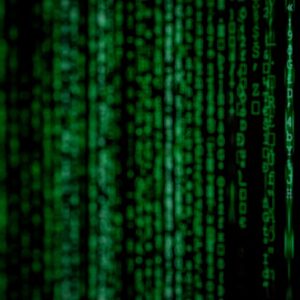

Research paper: Will Open Banking create novel systems, and to what end? Lessons from history
Dr Ashima Chopra | Women In Open Banking
31 May 2023
“The use of the history of the horse in battle is divided into three periods: first, that of the charioteer; second, that of the mounted warrior that clings to his steed …; and third, of the rider that was equipped with stirrups. The horse has always given its master an advantage over the footman in battle, and each improvement in its military use has been related to far-reaching social and cultural changes. Before the introduction of the stirrup, the seat of the rider was precarious. Bit and spur might help him to control his mount; the simple saddle might confirm his seat; nevertheless, he was much restricted in his methods of fighting … Swordplay was limited because ‘without stirrups your slashing horseman, taking a good broadhanded swipe at his foe, had only to miss to find himself on the ground’ [1]. The stirrup, by giving lateral support in addition to the from and back support … effectively wielded the horse and rider into a single fighting unit capable of violence without precedent. The fighter’s hand no longer delivered the blow: it merely guided it. The stirrup thus replaced human energy with animal power, and immensely increased the warrior’s ability to damage his enemy. Immediately, without preparatory steps, it made possible mounted shock combat, a revolutionary way of doing battle.” [2]
Referring to the quote above, “what was the effect of the introduction of the stirrup in Europe?” The answer to this by the author is: “As our understanding of the history of technology increases, it becomes clear that a new device merely opens a door; it does not compel one to enter. The acceptance or rejection of an invention, or the extent to which its implications are realised if it is accepted, depends quite as much upon the conditions of a society, and upon the imagination of its leaders, as upon the nature of the technology … itself. … the Anglo-Saxons used the stirrup but did not comprehend it; and for this they paid a frightful price. … it was the Franks alone – presumably led by Charles Mantel’s genius – who fully grasped the possibilities inherent in the stirrup and created … a new type of warfare supported by a novel structure of society which we call feudalism.” [3]
Designing Open Ecosystems for all
Can we then ask, prospectively, what the effect of the introduction of Open Banking will be in the future? And, unlike looking back, retrospectively, historically, can we instead “engineer” via design, knowing the variables at play, the outcomes of how we lead with the future in mind, when it comes to Open Banking and/or Open Ecosystems?
Open Banking, with the ability to access data in a secure manner, has a simple starting point. This starting point, the ability to access data, can be used to make an impact across the socioeconomic spectrum of peoples and society.
Its basic “tool” – its basic “invention” – is data access and smart data, where data can be infinite, as is the outcomes its access can be applied to. Given Open Banking is at the inception of its journey, and it is only just really coming to its own, the opportunities are infinite. [4]
The evolution of Open Data is, in part, driving the innovations in the realm of Open Ecosystems, particularly in the financial sector. Most of the innovations within these areas use this Open Data, as we know, for actions via consent such as payments, or for decision-making in financial services, such as creditworthiness.
Similar to the advantage the stirrup in the example above lent to rider, what advantage can Open Ecosystems lend users of the technology? Understanding how the technology of the stirrup enabled the innovation of sword fighting is essential to understanding the effect of the use of the stirrup.
In this paper we will try to understand the science, technology, innovation and use of Open Ecosystems (of which Open Banking is a subset), and how this can be designed to be inclusive in that it is useful to all – men and women, alike.
The very creation of data gives rise to the science of data, which in turn creates the advantage of insight into people’s habits, at the very least. Data science combines math and statistics, specialised programming, advanced analytics, artificial intelligence (AI), and machine learning with specific subject matter expertise to uncover actionable insights hidden in an organisation’s data. These insights can be used to guide decision making and strategic planning. Which is to ask, what is data?
Data is, by definition, “information, especially facts or numbers, collected to be examined and considered and used to help decision-making, or information in an electronic form.” [5] This information can be processed for systematic study or behaviour of a structure.
What then is the definition of science? Science “is the knowledge about the structure and behaviour of the natural and physical world, based on facts that can prove” [6] these structures or behaviours. Such as data science. But what if this data is flawed? Would it then make the science flawed? While the answer to this is obvious, the outcomes can be catastrophic.
With reference to the Boeing 737 crash, data played a role: “CEO Dennis Muilenburg acknowledged … that bad data feeding into an automated flight system on the company’s popular 737 jets played a role in two crashes that killed 346 people … [where the system] activated in response to erroneous angle of attack information [leading to the crash]. [7]
Erroneous data can lead to horrendous consequences, given that modern data science is used in the science of engineering. So, what is engineering? Engineering is “the use of scientific principles to design and build machines, structures, and other items …” [8]
In the case of Open Ecosystems, the science behind the engineering and design is the data. In most cases the technology created is data driven, the models evolving are data fed. The technology is the application of the scientific knowledge for practical purposes. The definition of technology is “the application of scientific knowledge for practical purposes, especially in industry.” [9]
The distinction and relationship between the creation of technology, such as with bits and bytes, and the application of technology with its usefulness, is usually not made distinctly apparent in the use of the word “technology”. If we were to separate the creation and application elements of technology, it is the application element that interfaces with other environments. Technological innovation is the creation of new products (inventions) and their applied use (innovations) [10]. The emphasis is on the term “use” in innovation, not just the process of producing or creating a product, as in “invention”. It is this applied use that allows technology to interact with the real-world.
In other words, smart data can be not so smart and not so useful in its application if it is designed with inherent known or unknown flaws.
Fixing the gender data gap
Going back to the definition of data science – data science combines math and statistics as well as advanced analytics, AI, and machine learning, with specific subject matter expertise to uncover actionable insights. Importantly, data is the main component of these Open Ecosystems. AI is a dominant field (in analysing this data), which combines computer science and robust datasets, to enable problem-solving [11] and knowledge generation.
There exists a real gender data gap that is “both a cause and a consequence of the type of unthinking that conceives of humanity as almost exclusively male.” [12] It is “due to the existing data gap, our understanding of global problems and the solutions we design for them are primarily based on men; male bodies, male preferences and prototypical male life choices …” [13] The question imperative to ask is: What are the visible and the invisible gaps in the data? How is the data generated? Does the data modelling continue to exclude the excluded? Does it have inherent biases? Who then feeds the data models that generate the AI?
In the end: Is that data really smart? Or is it not telling us it is not so smart, letting us assume, for lack of knowledge of its creation, that it IS smart?
As the data sets grow, so do the gaps. And with it the engineering, as in the “design” of those applications this data is used for, is flawed, leading to flawed designs. These flawed designs do not contain themselves to one level but grow and spread from a micro to macro extent. Flawed data leads to flawed design, leads to flawed application.
If we fix the data gaps, the ability to include all in the process of designing the technology and structures and any related innovations that emerge from it will not see weaknesses. Fixing the gender gaps in the design will fix the gender gap at point of implementation. If women are included at all stages of the design (starting from the point where women are included in the use of the data, they will become part of the data that drives the next design, iteration, innovation).
The question to ask is: “have we fixed the data gaps?” And: “are we willing to fix those data gaps?”
To achieve novel use of Open Systems that include all, without data gaps, takes vision.
“The story goes that Rome fell to barbarian hordes. Another that it was ravaged by climate change and plague. Recently, though, historians have taken to playing with the idea that Rome fell quite simply due to a failure of imagination – that it rose to become the undisputed world hegemon by the first century AD, and then stood still. No Roman ruler, poet or philosopher could summon a vision of the future. Augustus precociously declared the end of history, with no possibility to surpass what had already been achieved. And then it crumbled.” [14]
Without a vision to get women into the world of ever-changing technology and to allow them to contribute as users, as contributors, as inventors and as innovators will surely lead to the further crumbling of the data gap with no bridge in sight. It is this endeavour that needs to be, then, the predominant focus of the effective use of Open Ecosystems. They must include all, to strive to benefit all.
Using engineering and science to bridge the gaps
It is up to the leaders in the field of Open Systems (be they Open Banking or other systems) to ensure that the engineering of the design of these systems are best comprehended for the best use for all. The science and the technology behind these systems should be realistically including those it wishes to serve, without leaving gaps that create greater flaws, with each iteration leaving dangerous gaps behind.
“Treating men as the ‘default human’ in economic planning is not only costly for society but the practice can also be deadly for women …” [15]
The gaps matter. The vision matters. But the engineering and science, if done right, can bridge those gaps. It is up to the leaders to be honest about the science behind the vision. And realistic too.
Professor Richard Feynman, in his report to the Presidential Commission investigating the Challenger Space Shuttle Accident concluded that it was imperative “in understanding technological weaknesses and imperfections well enough to be actively trying to eliminate them [and that] … for a successful technology, reality must take precedence over public relations, for nature cannot be fooled.” [16] Remembering that: “The invention of the steam engine changed what people consumed, how they travelled, where they lived …[and people invested in railways with the share prices soaring] … But like any investment bubble it ultimately burst. Demand was not enough to keep pace with supply. Investors including Charles Darwin and Charlotte Bronte were left holding the bag. ‘The original price of shares in this railway was £50.00. At one time rose to £120; for some years gave a dividend of 10%; they are now down to £20,’ wrote Bronte, author of Jane Eyre.” [17]
Eliminating gaps, comprehending advantages of inclusion, will not only win demand but also avoid the pitfalls of a feudal system – whereby people were given land and protection by people of higher rank, and worked and fought for them in return – of distribution of the advantages gained via the invention of stirrups for generations (or of Open Ecosystems, as may be the case).
Open Ecosystems, Open Data, smart data, and the structures (as in the systems) that develop from them, need to be realistically approached, their flaws rectified, and their edifices replanned accordingly (or of iterations of technology and innovations as may be in this case) to remove the gaps.
It is only then that we can validate speaking of the Rome that can be built through this invention (of Open Ecosystems), alongside the useful technological innovations inherently lodged within its design.
Dr. Ashima Chopra, B.A. (Mars Hill, USA); M.A. (Bradford, UK); M.Sc. (Bradford, UK); PGDip. (Bradford, UK); Ph.D. (Bradford, UK) is a member of Open Banking Expo’s Women in Open Banking initiative.








